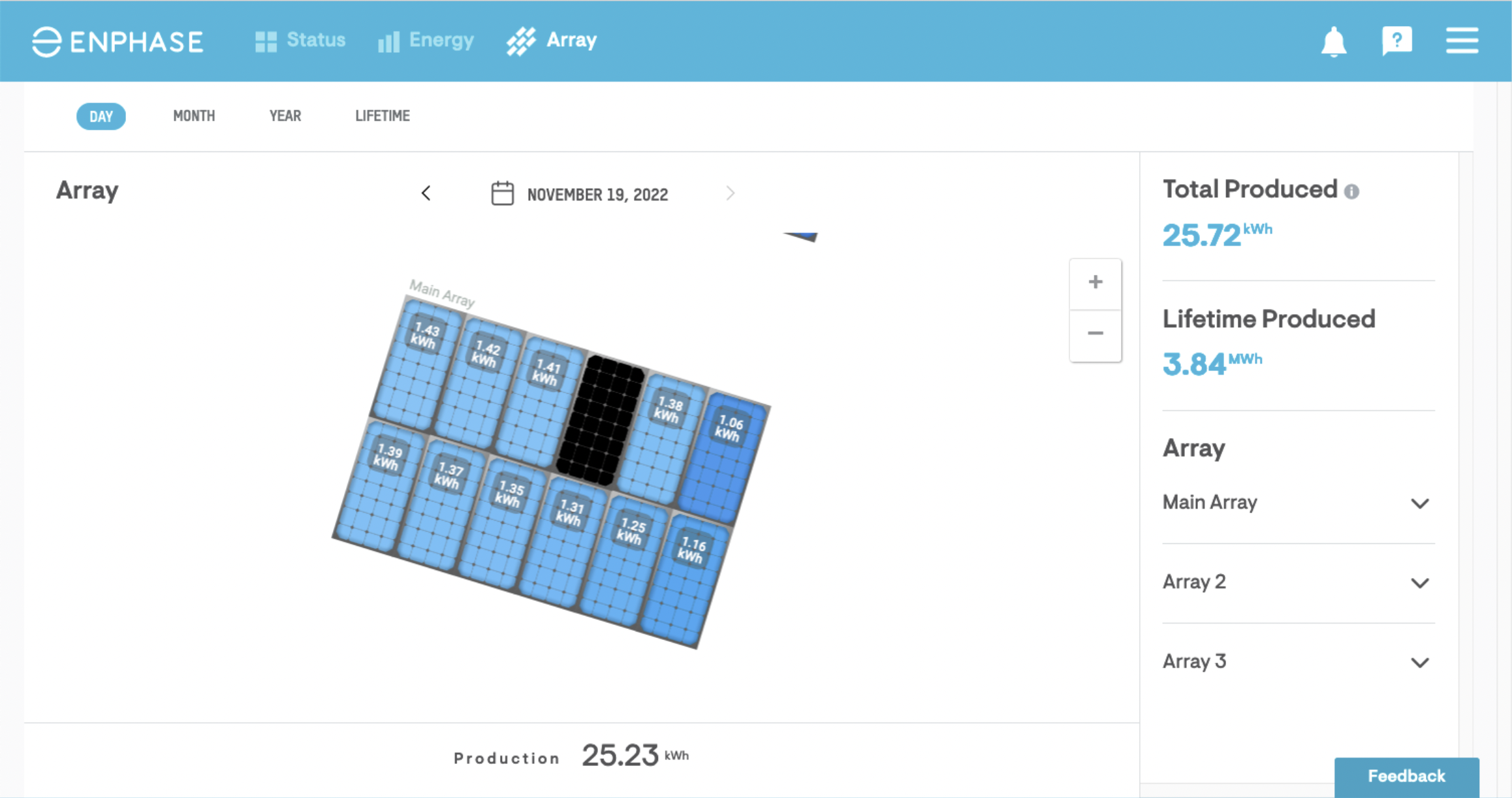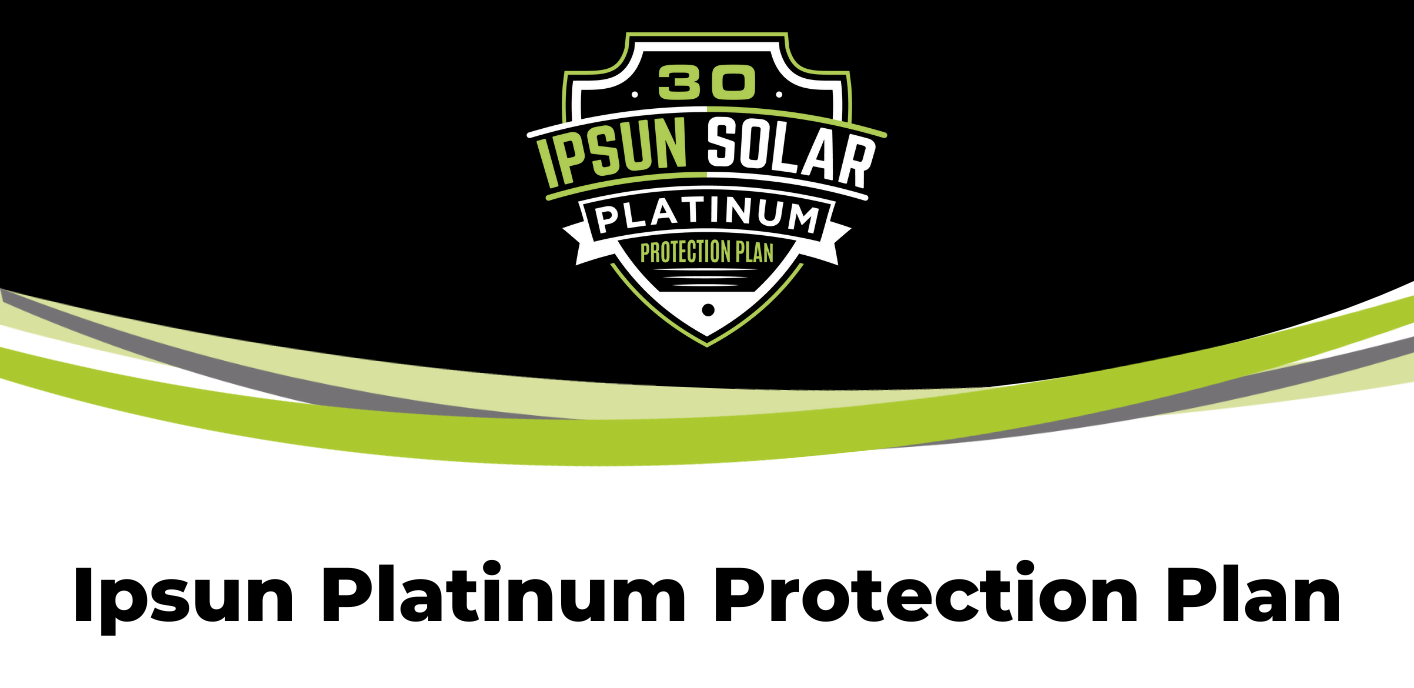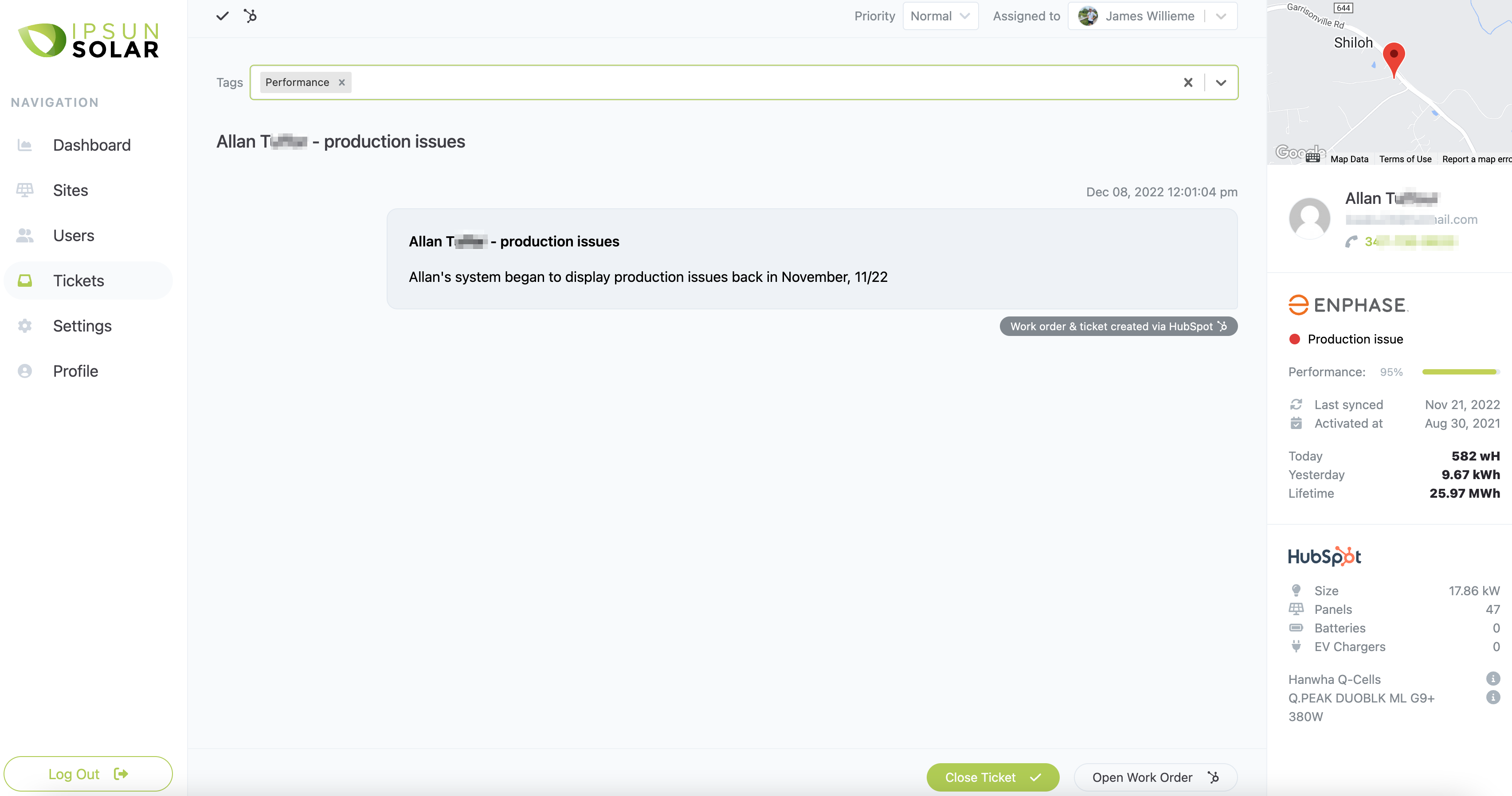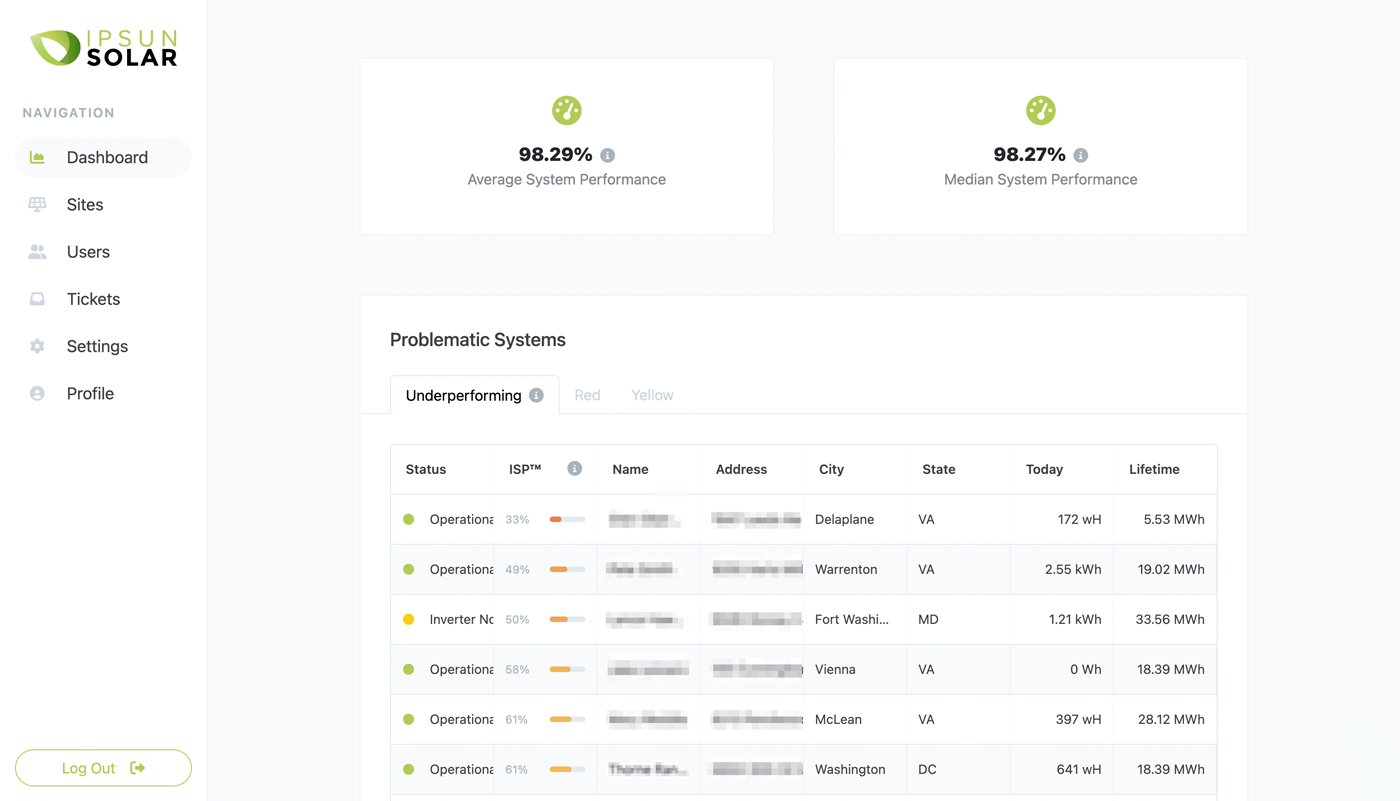
Solar O&M: How we turned our most frustrating & expensive company division into a profit center
Is there any area of running a solar business more frustrating than service and maintenance?
The O&M (Operations & Maintenance) department is almost always a major cost center for the big majority of companies we know or have talked with. It was exactly the same for us at Ipsun Solar, yet we have found a few powerful levers that made our service department profitable, allowed us to sell active monitoring at 10x markup, properly set customer expectations and even turned into a major driver for generating happier customers and more business.
Curious how we did that?
In this post we will discuss 5 lessons from our approach and how it has helped us to finally make solar service profitable:
1. Rapid Shutdown and Panel Level Optimization created the residential service industry

Ever since the advent of rapid shutdown and panel level optimization, the number of service calls has exploded, both because of the implosion of HD Wave inverters as well as the obvious fact that when you have no single point of failure, you have many, many more opportunities for failures. While the previous generation may have lacked rapid shutdown, those tried and true SMA inverters simply worked, reliably for 12 years or even longer.
Now that rapid shutdown is codified in the National Electric Code, and required in more and more jurisdictions, the proprietors of panel level optimization are making an absolute killing.
They also offer panel level monitoring.
Have you ever had a customer call to ask why one panel is producing a nominal amount less than an adjacent panel?
Of course you have, the question is whether you’ve heard the question a hundred times or a thousand times.
Have you ever heard a customer demand that you come out immediately to swap a micro because of underperformance?
Of course you have, the question is whether you had to ignore the request for lack of resources, or actually hire someone to tackle the never-ending stream of these demands.
All of this has raised the bar on what is expected of solar installers, but more importantly what is expected of solar installations. In the old regime, it was just expected that if you have light shading, you would have slightly less solar production. But now that homeowners can view what every panel is doing, it’s essentially as though they are the owners of 30 solar systems on their roof (if they were to have 30 panels).
It “empowers” homeowners to take control of their system monitoring and performance in a way that never was possible before. This isn’t all bad, but it helps to face the reality of the situation.
If you’ve installed 1,000 residential solar jobs with an average of 30 panel level optimizers (either literal “optis” or actual microinverters), instead of having 1,000 points of failure, you now have 30,000 points of failure.
Welcome to the advent of the modern solar service and maintenance industry!
Is any of this even good or necessary or adding value? Well I’ll let the academics decide whether rapid shutdown is a genuine safety concern, if panel level optimization actually produces more power, and the extent to which all of this impacts the price of solar (both in upfront cost and ongoing maintenance), and thereby might halt the progress in bringing down the cost for everyone.
Those are empirical questions that should be left to experts.
The reality is: there’s probably no going back at this point.
2. There seems to be only bad options to this problem
So now that you have been bestowed with 30,000 points of failure, what are your options? Well the most popular option seems to simply do nothing at all. Most solar installers barely have the resources to keep up with their existing lead and sales pipeline of new residential solar installations, let alone the endless stream of maintenance requests.
So what do you do when hundreds of people call you every year with questions that otherwise might not have cropped up if not for panel level optimization? Many installers are simply left ignoring them leading to indiference in the best case and bad reviews in the worst case.
Now if you have selected to not ignore those customers, it means that you have hired a service manager and a team of O&M techs. That is at a bare minimum, three new full time employees. Let’s conservatively estimate that those three people cost you $200,000 per year with benefits and taxes. Well if you’re installing 3MW a year, that’s about $.07/Watt in increased cost to the homeowner. Panel level optimization conservatively increased the price of solar about $.20/Watt from the previous regime of central inverters.
Can you see where this is going?
The cost of solar is rising not just because of tariffs and supply chains, folks.
Now almost every solar installer that wants to maintain good reviews, needs to staff a service division to tackle these tickets.
Or at least they are trying.
But often the volume is so great that they simply can’t manage it even with the small team described above.
This means that they may have had to outsource their service and maintenance to a third party call center, which can triage the tickets, resolve those that can be resolved remotely (communication issues, etc.), and then simply bounce back the physical field issues to the installer. For many installers, this has been a great help - but not without cost. Those outsourced third party service providers often make even an excessive wedding look cheap, and eat into the solar savings by as much as 20-30% or more.
There are also “insurance” products which claim to provide decades of support. But when you dig into the details, they often are not insurance at all.
They also are so limited in what they cover that you’ll only have a handful of claims approved, and surely nowhere near the $200,000 you just spent to staff your service division. We tried one of these third party “insurance” providers and found that over 99% of our tickets had absolutely nothing to do with what was covered.
3. There is demand for solar service and maintenance – but it costs money
Okay, stating the obvious here. Everything so far is probably telling you what you already know anyway even if you have not read it in black and white yet. We have a huge problem with service and maintenance that needs to be addressed, and there are simply no great options.
But here is the upside:
There is demand for something in the market that can be turned into a business opportunity. If you can meet that demand for solar service with a service agreement or similar simple product, you could not only turn those upset customers into happy customers, but you just might make money doing it.
The real question is how do you “insource” your maintenance business without relying on expensive or misleading third parties? How do you do it in a way that makes solar service sustainable, solvent and growing without sacrificing the quality of your main residential installation business? Most importantly, how can you tell your prospective solar installation customers that service costs money and they should be ready for it, without losing sales on the front end?
These are existing questions that have not been properly addressed in the solar industry until to date.
But here is the potential upside if we can answer these questions together: There are solar installers out there who have supplanted most of their marketing budget with a “swat” team of folks who actively monitor systems for issues and reach out to customers before they even know there is a problem, to help resolve it immediately.
We have found that these installers have the lowest cost of acquisition in the industry because their customers are so delighted at the service provided that they can’t help but tell everybody about it. Imagine someone called you to tell you that your air conditioner was operating sub-optimally, and that the service provider was going to come out and repair it free of charge. You would be delighted too! For the first time in history it’s not you trying to play catch up with a company but the company acts proactively to make your life better.
The real question is how do you perform active monitoring if you have multiple inverters out there in the field? Imagine toggling between all these platforms trying to make sense of what needs attention and what does not.
That is not easy, my friends.
One of our installer friends we have talked to came up with elaborative semi-automated scripts they try to run once a week just to figure out which errors are new, temporary, already taken care of or need to be acted upon. They just got this to work more or less for a single inverter, being frustrated that they are still missing a solution for the other half of their fleet.
4. Ipsun Solar found a way to make solar service profitable
At Ipsun Solar, it took us the better part of our seven years in business to figure things out. We tried just about every option out there and it was a wild (and not always enjoyable) ride!
The solution is actually surprisingly simple:
If you can show your prospective solar customers that you are able to do active monitoring, then you can sell active monitoring. If you can sell active monitoring, you now have a bank of resources to build out a sustainable solar service division.
Now your first reaction may be skeptical.
“You’re telling me that I don’t need to extend my warranty or provide insurance in order to sell customers on a service agreement?”
Yes, and even beyond that - you don’t necessarily have to sell a service agreement at all. Active monitoring is something that consumers actually want, and are willing to pay for. That is, if you have a platform that can do it at scale.

Ipsun Solar launched its “Ipsun Platinum Protection Plan” (IPPP), at the end of 2022. We offer thirty years of active monitoring with Sunvoy, and service calls at-cost (20% off). We have had an 80% attachment rate in selling this product at the front end of our residential sales calls. That will bring in around $250,000 in the first year alone, which is more than we’re spending currently on our service division! This means that we can grow that division and hire and train more folks to expand this business model.
But here is the best part:
When you sell prospective solar customers on this idea, you are also priming them for the fact that service costs money.
We are not going to do free work that is unrelated to the workmanship warranty, which should only be applicable if we actually did something wrong on the day of the installation. We are not going to provide free labor for micro swaps, or spend hours educating homeowners on how to read their utility bill, or why one panel is shaded from their chimney - unless they paid for the service on the front end by purchasing our protection plan.
Now of course, if they did not opt for the plan then they still have a 12-year workmanship warranty, which is great!
But you and I both know that a 12-year workmanship warranty does not have anything to do with 99% of the tickets and service requests that you receive at your company.
Most are related to the inverter manufacturer, remote troubleshooting, or connectivity issues. The great thing about this is that you now actually have a powerful weapon if people opt-out of this and still have requests that don’t fall under the workmanship warranty.
Just as apple does you can now conveniently upsell them on the service plan, with a one click option from within their customer portal. Maybe even breaking it down into small monthly payments so that the cost of it is spread out and it doesn’t feel like another big lump sum payment once their system has already been installed.
The example we often give our sales teams and our customers is that if a contractor installs a dishwasher in your home, you don’t go back to them if the dishwasher malfunctions (unless they did something seriously wrong in the installation itself). You go to LG, or Samsung, or Whirlpool, or whomever made the dishwasher. But for whatever reason, in the solar industry, the inverter manufacturers have been fine to put as much responsibility on the installers as possible. I’m sure their shareholders don’t mind.
5. It’s high time that solar installers make clear who is responsible for what
If you don’t find a good way to explain these points and this story (albeit in a more concise way) to homeowners, then you will be stuck with the aforementioned bad options forever. But if you can explain it clearly and effectively on the front end, you can grow your business, make your service division profitable, and have your customers pay you to actively monitor their systems and delight them by resolving problems before they even know about them!
Like everything we do we have proven first that it’s possible in our own company before telling you something that just doesn’t work.
But you have to have a platform that allows you to perform active monitoring in the first place. Sunvoy is the secret weapon to getting there. Sunvoy allows you to see all of your solar array assets in one place, independent of the inverter manufacturer. Once you can see all of your solar assets in one place, including a map of every single system you have ever installed with a real time view of the status, then you can much more easily triage system issues and deploy your service teams.

We can automatically create tickets for new errors as they pop up, and even create tickets for problematic systems that don't show any direct inverter error. We can tell your team which systems have been taken care of, and which ones are not addressed yet.
Once you have a platform like Sunvoy where you can see underperforming systems with real megawatt hours to estimated megawatt hours in your contracts, then you can actually act proactively: seeing which systems need attention and which do not (but might be the perfect target for asking for a good review or referral instead).

This capability makes it far easier to tell which systems may have issues as a result of workmanship and which are the result of inverter degradation or failures.
Can you guess which takes the cake?
If you’re struggling with solar service and maintenance, do not despair. We are making everything that Ipsun Solar used to create its Platinum Protection Plan available to all solar installers when you sign up for Sunvoy.
Nothing brings us greater satisfaction than helping solar installers get stronger and learn from what we have built. If you’re interested in learning more about Sunvoy or how we implemented our Ipsun Platinum Protection Plan, jump on a free audit call today:
From "aha" to "oh crap", we're sharing everything on our journey to help install 100,000 residential solar systems per year.
We're learning a lot and so will you.
Residential solar systems installed through Sunvoy in the past year:
Real time metrics tracked bysunvoy
Before starting Sunvoy, Joe was the Co-Founder and COO of a top residential solar installer in Washington DC with 60+ employees and $12M+ in annual revenue. Now he helps solar companies scale far beyond through Sunvoy.
